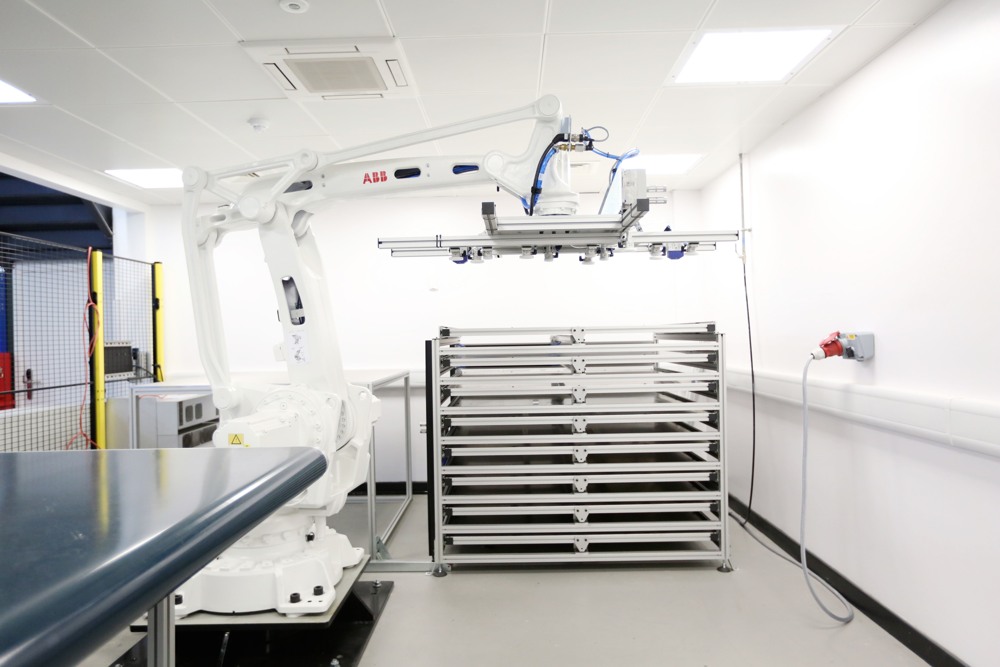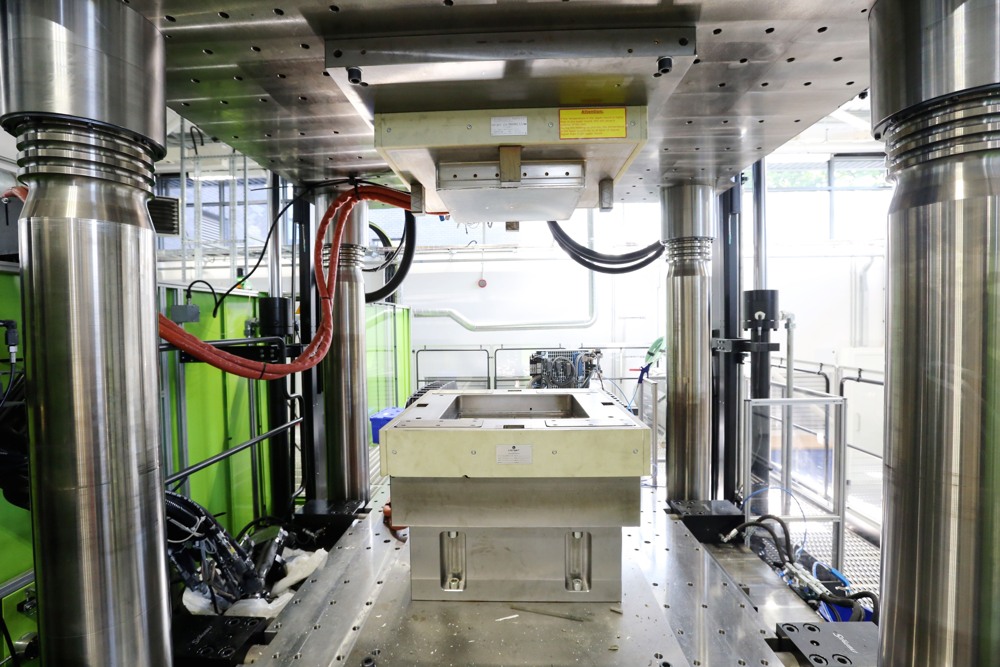The car is the star!

Reporting on the mass market appeal for the mass production of lightweight CFRP saloon cars, Composites in Manufacturing talks to Professor Ken Kendall, head of structural composites at the Automotive Composites Research Centre, WMG University of Warwick.
The automotive industry is being driven by environmental demands to reduce CO2 emissions, which is predicted to see the high-volume manufacture of increasingly more lightweight family saloon cars from CFRP materials.
Any car builders that do not comply with the EU’s environmental CO2 emissions mandate by 2021 could be hit by some potentially company ending fines. So, will we soon see some initial runs of ‘mass-produced’ cars rolling off various automotive OEM production lines?
Q) Is the composite manufacturing industry ‘really’ ready for the potential of high volume, fast production of CFRP saloon car structural parts?
The short answer to this is no. There are a number of low- to medium-volume applications in the market place today, but the cost of these parts would not be competitive for high volume vehicles.
Q) CFRP is expensive and the production processes used to convert it into components too slow for use in high-volume manufacture. What kinds of material developments and processes are automotive OEMs/composites manufacturers looking at that would solve these shortcomings?
There are very fast-reacting resin systems available today that can be processed in a 2- to 3-minute moulding cycle, which is adequate for high-volume applications running multiple shifts. Preforming the component for all, but simple geometries is much slower and produces a lot of expensive waste. So, in addition to addressing the high cost of composite materials, the industry must address preforming cycle times and waste reduction and/or waste re-use from this process.
Q) What are the issues that need addressing for OEMs/manufacturing supply chains to achieve cost competitive production rates?

Automation is key to implementing a high-volume manufacturing process, so manual processes must be eliminated. Processes which offer high material utilisation for preforming, such as tape laying or other net-shape blank manufacturing processes, are generally slow and require much higher material throughput. This is an area where equipment development is required. HP-RTM is unlikely to be suitable for high-volume automotive applications. Compression moulding of continuous and/or discontinuous fibre prepregs and compounds offer a much more robust solution.
Q) Everything needs to change if we are to redesign car parts based on composites, so are we thinking enough about composite drapeability, fibre direction, reinforcements, how many layers are needed and material thickness, etc.?
Composite materials offer a lot of design flexibility, but only when the correct materials are selected for the application. Non-crimp fabrics do not drape as easily or evenly as woven fabrics and require balancing to achieve a stable layup, but can be used to produce higher strength components. Multilayer composites will always suffer from inter laminar shear unless a through-thickness reinforcement is introduced, but this inevitably increases cycle time. Continuous fibre composites offer greater strength than discontinuous fibre components, whereas the difference in modulus is less disparate. Discontinuous fibre composites can also be formed into non-planar geometries, which offer greater design freedom for ribs, bosses and attachment points. It’s about using the right materials for the application.
Q) What evidence or examples have you seen that demonstrates the industry’s commitment to the long-term vision for the adoption of composites by the serial automotive industry?
The weight savings achievable using carbon fibre composites are obvious and the fact that OEMs and Tier 1s continue to support composites manufacturing research and development is testament to their commitment. The pull they provide is a great incentive for funding bodies to continue investing in this area of light weighting and as long as improvements continue to be made their commitment will remain.
Q) What achievements can the UK composites manufacturing industry shout about relating to some key wins in the automotive sector?
Most applications manufactured in the UK are low-volume for luxury products using processes unsuitable for high-volume applications. That said, companies like Gurit Automotive have made a niche for themselves producing low volume class A components for luxury sports cars. Others, such as Prodrive Composites and EPM Composites have an established presence in motorsport and provide low-volume products for speciality vehicles in the mainstream market.
Q) Typically, what structural car components stand to benefit the most from being manufactured from CFRP?
Body applications stand to benefit most from the high stiffness and low weight offered by carbon fibre composites. Chassis components are more highly loaded and offer much greater challenges in design and manufacture, but they too would benefit. The tieblade/knuckle component manufactured during the Innovate UK funded Composite Lightweight Automotive Suspension System (CLASS) project is a very good example of this.

Led by Ford, in support of its lightweight chassis development strategy and partnered by Gestamp, GRM and WMG, the CLASS project successfully delivered a new carbon fibre composite tieblade-knuckle component, 35% lighter than the multi-piece steel design it replaced. A major part of the project was the development of a production process capable of manufacturing a multi-material component in a single moulding cycle. This required innovative process and mould design solutions to ensure consistent part quality and to prevent mould damage.
Extensive in-mould instrumentation was used to generate critical parametric data which was fed into the multi-loop post processing analysis necessary to optimise the moulding cycle time. The CAE analysis tools created specifically to support the development of this innovative design, which incorporates multiple composite materials (continuous carbon fibre biaxial and unidirectional epoxy prepregs with discontinuous carbon fibre vinyl ester SMC) in combination with a steel insert, were used to optimise material usage and to verify component strength, stiffness and durability. The project also established that the design methodology and manufacturing technology developed to reach a solution to this application could be applied to other areas of the vehicle to potentially attain much higher weight savings. It was tested in accordance with the series production component and system verification process with test results being used to successfully correlate results predicted in CAE.
The CLASS project has been nominated for the 2018 JEC Innovation Awards and is a finalist in the Automotive Applications category. The finished component will be on display in the ‘Planets’ exhibition area at JEC World 2018 and on WMG’s stand U36 in hall 6, assembled with the remainder of the rear suspension.
Q) Whilst the lightweighting properties of CFRP are apparent for all to see, just how far behind the production rates of traditional aluminium/steel stamping processes are we?
While it is obvious to compare composites with metal stampings, they could easily be used to replace castings and forgings too. Stamping processes have cycle times measured in seconds, but this is because the manufacturing process is separated into discrete steps that allow this. The disadvantage of this approach is that several tools are required to complete each step of the process, which is expensive. The advantage composite manufacturing offers is lower tooling investment, which has to be offset against the higher manufacturing costs incurred using a slower process. It is often possible to integrate a number of metal components into a single composite component due to the more complex geometry that can be manufactured in a moulding process. This again reduces the investment cost required. Casting processes are typically slower than stamping processes, so less competitive, and can require very expensive tooling which often needs replacing during the lifetime of the application. So, reduced investment cost is one of the main benefits over weight reduction when using carbon fibre composites.
Q) Recyclability/disposability: I’m presuming the first wave of mass produced CFRP saloon cars will be made using thermosets, which are not recyclable. When can we expect thermoplastics to become more prevalent as the material of choice?
Application of thermoplastic composites is limited by the environmental limitations of the resin systems currently available. Presently, only expensive aerospace materials would meet the demands of most automotive applications.
Q) And… I’m assuming that thousands of composite car parts will require lots of prepreg that will need to be stored correctly and the waste to be disposed and efficient de-bonding requirements too. What is the contingency for this possibility?

Prepreg resins which do not require storing in freezers for several weeks are currently available, so storage is not the problem it once was. Waste from roll products is prohibitively high and methods to reduce this are required. This may mean the development of new manufacturing processes that can use irregular shaped offcuts or, more likely, processes which can convert these offcuts into a form which can be used in current manufacturing processes.
Q) What key organisations and R&D programmes is the WMG working closely with?
WMG, is one of the founding members of the HVM Catapult, and is closely linked to the Automotive Council, as is the Automotive Composites Research Centre (ACRC). Across WMG projects are funded by Innovate UK and APC with several in ACRC. WMG works closely with the Advanced Propulsion Centre (APC) and is the APC Energy Spoke. As a research centre focusing on high TRL output, ACRC has less affiliation with EPSRC.
Q) Ultimately, will the price of CFRP saloon cars be an issue in comparison to traditionally built cars, or will automotive OEMs be forced to swallow any additional production costs just to satisfy the EU CO2 mandate?
Automotive OEMs are in business to make money and they do that by manufacturing and selling vehicles. They cannot make money by selling mainstream vehicles at a loss, so ultimately the consumer will have to bear the increased cost. The benefits of ownership will therefore have to offset the higher cost. These benefits may include greater fuel economy in ICE vehicles or greater distance on a single charge for PEV. Otherwise, it will never happen.








